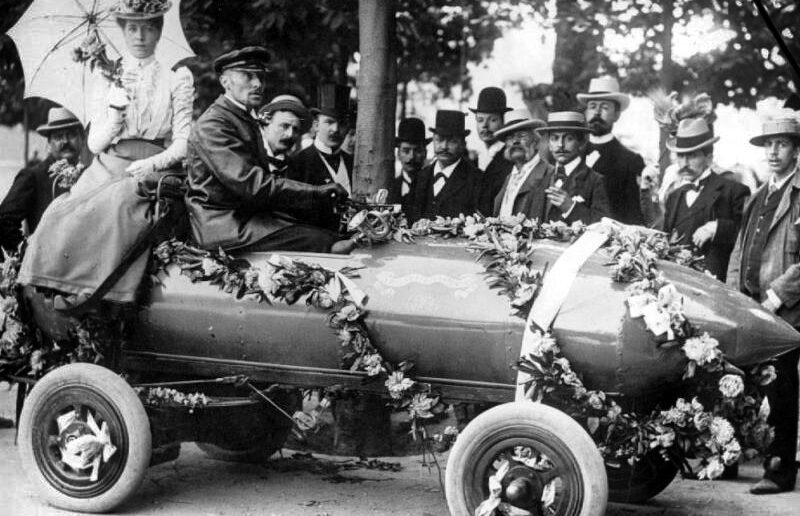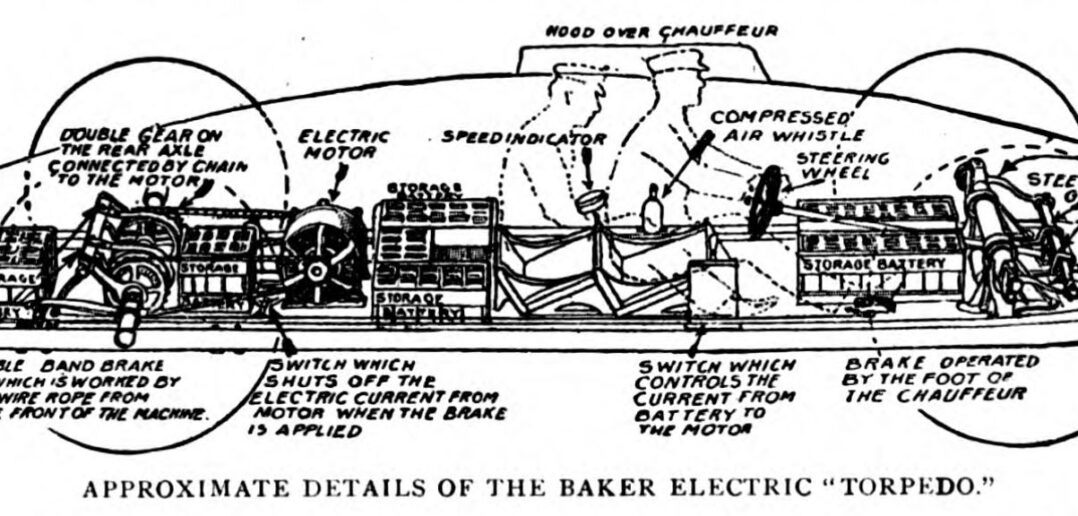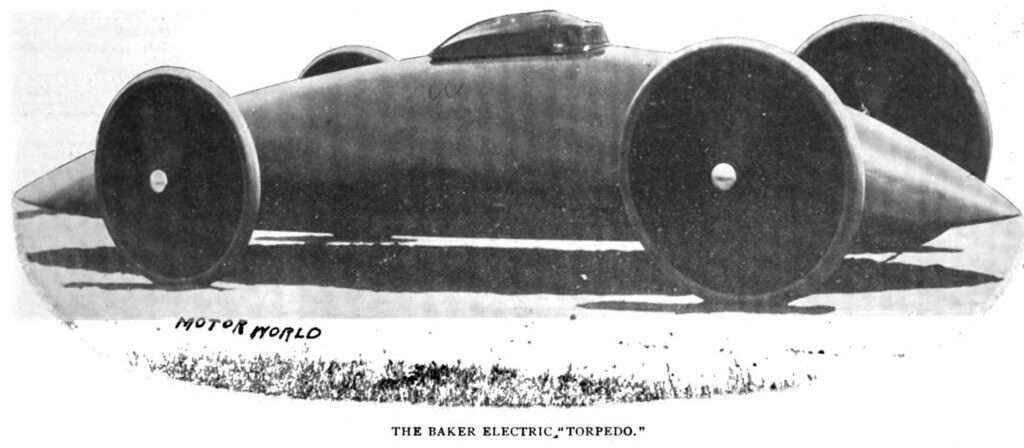Electric and hybrid motorsport appear to be, slowly, coming of age. Formula E launched seven years ago and until recently remained the only all-electric global series. However, this year will see the debut of an electric class in rallycross and TCR, and the Extreme E series has begun its around-the-world off-road odyssey.
It would be all too easy to assume that EV racing is a product of the 21st century. In fact, nothing could be further from the truth. Nearly 120 years ago a car broke the 100mph (160km/h) barrier for the first time – the car was the Baker Torpedo, and it was electric.
It must be remembered that as the 20th century dawned, the internal combustion engine was far from the dominant form of propulsion it is today. In the nascent automobile market, steam and electric power were, if anything, leading the technology race.
In the late 1800s, electric cars traded places for the land speed record. On March 4, 1899, the Comte de Chasseloup-Laubat set a speed record of 57.6mph (92.7km/h) at Acheres, near Paris, in what was credited as being the first official land speed record. His mount, ‘The Jeantaude’, was electric.

In short order, Belgian racing driver Camille Jenatzy raised the bar with another EV, the CITA No.25 ‘La Jamais Contente‘, which translates as ‘The Never Satisfied‘. He had already broken Chasseloup-Laubat’s record just 10 days after it was set, driving a standard roadgoing CGA ‘Dogcart’ electric car, but La Jamais Contente was a dedicated racer, built with the sole purpose of breaking records.
The car featured a streamlined body constructed from a light alloy called partinium, a combination of aluminum, copper and zinc, mounted on a ladder frame chassis (which no doubt negated the benefits of the body’s sleek lines). Under the body was a pair of Postel-Vinay 25kW motors, running at 200V and drawing 124A from a Fulmen lead-acid battery. The potent machine set a new record on April 29, 1899, and Jenatzy became the first man to travel at over 62mph (100km/h). Officially, his record stood until 1902, when it was broken by Léon Serpollet’s steam car and, in the same year, the first internal-combustion-engined car to hold the record, William K Vanderbilt’s Mors Z Paris-Vienne.
However, Walter Baker of Cleveland, Ohio, owner of the Baker Motor Vehicle company – a successful manufacturer of electric cars and commercial vehicles, which even supplied the White House – has a decent claim on the 100mph barrier.
Baker’s Torpedo was advanced for its time. Like La Jamais Contente, it had an aerodynamic body but was fully enclosed and also low slung. Drive was provided by 11 batteries feeding a 14hp Elwell-Parker motor that was mounted in the rear of the vehicle with power transmitted to the rear axle by a double chain. Amazingly, it was also fitted with safety belts for the occupants.

On Memorial Day 1902 (May 31), Baker took part in speed trials organized by the Automobile Club of America on the streets of Staten Island, New York. As was customary, Baker carried a ride-on mechanic, in this instance company chief engineer, E E Denzer. During the event, Baker was recorded covering a flying kilometer in 16 seconds, averaging exactly 100mph. However, tragedy struck when he hit a pair of tramlines, throwing the car off course into the crowd of onlookers and killing one person. Baker had smashed the previous record by over 35mph (56km/h) but, due to the crash, the run was disqualified. Had the incident not occurred, Baker was sure that the Torpedo was capable of 120mph (193km/h). He went on to build two smaller, single-seat torpedoes, but neither was able to set a verified record.
Ultimately, the 100mph mark would not officially be achieved until Fred Marriott drove the Stanley Steamer to 127.66mph (205.44km/h) in 1906, but for a brief period at the dawn of the automobile, electric cars were the fastest machines in the world.



